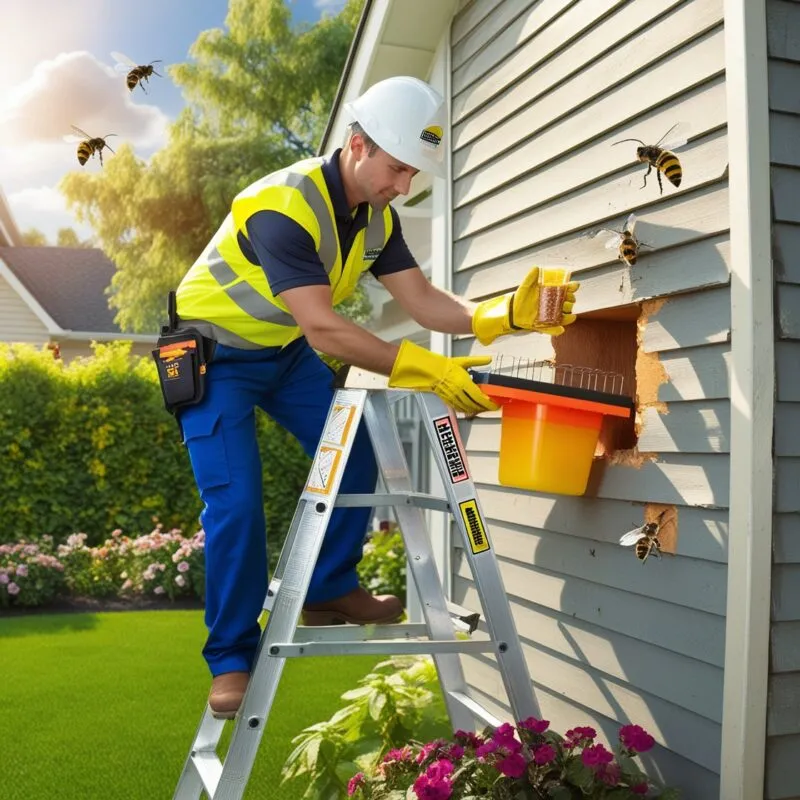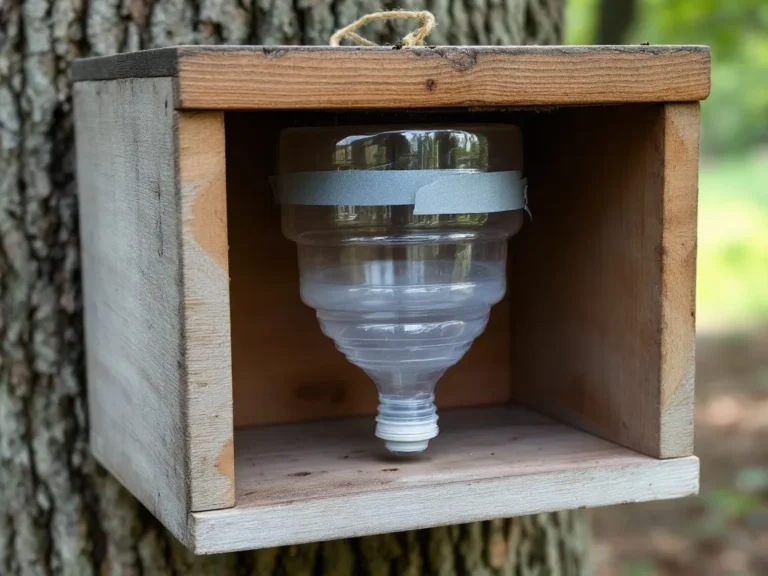Carpenter bees can be more than just a nuisance; they can cause significant damage to wooden structures around your home. If you’ve decided to take action with a carpenter bee trap, you might be wondering whether bait is necessary to make the trap effective. In this article, we’ll explore whether you need bait for your carpenter bee trap, how it works, and what options are available if bait is required.
Understanding Carpenter Bee Traps
- How Carpenter Bee Traps Work
- Natural Attraction: Carpenter bee traps are designed to mimic the perfect nesting site for carpenter bees. These insects are naturally drawn to wood, where they create tunnels to lay their eggs. A typical trap capitalizes on this behavior by offering a tempting wooden surface with pre-drilled holes that lead to a catch chamber.
- Trap Mechanism: Once a carpenter bee enters the hole, it becomes trapped in the chamber below, unable to find its way back out. The simplicity of the design makes these traps a popular choice for homeowners.
- The Role of Bait in Insect Traps
- Bait’s General Purpose: In many insect traps, bait is used to lure the pest into the trap by emitting scents or signals that mimic food or pheromones. The question is whether this approach is necessary for carpenter bees.
Do Carpenter Bee Traps Need Bait?
- Effectiveness Without Bait
- Relying on Natural Behavior: Most carpenter bee traps are effective without any added bait. This is because the traps exploit the bees’ instinctual drive to nest in wooden structures. The visual appeal and the familiar feel of wood often attract the bees on their own.
- Success Stories: Many homeowners have successfully used carpenter bee traps without any bait, relying solely on the design of the trap to capture the bees.
- When Bait Might Be Beneficial
- Challenging Situations: In areas where carpenter bees are less active or if the trap is placed in a less-than-ideal location, adding bait might improve the trap’s effectiveness. For example, if the bees are already nesting elsewhere and need additional encouragement to enter the trap, bait could help.
- Types of Bait: Some people use wood or citrus oil as a bait to attract carpenter bees. These substances mimic the natural scents that bees are drawn to, potentially increasing the likelihood of them entering the trap.
How to Use Bait in a Carpenter Bee Trap
- Choosing the Right Bait
- Wood Attractants: If you decide to use bait, consider using wood-based attractants like sawdust, wood shavings, or natural wood oils that replicate the smell and texture of their preferred nesting sites.
- Citrus Oil: Another popular option is citrus oil, which has been found to attract carpenter bees. A few drops placed near the entrance of the trap may help lure the bees inside.
- Applying the Bait
- Bait Placement: Carefully apply the bait near the entrance holes of the trap. The goal is to entice the bees to investigate the trap as a potential nesting site.
- Monitoring Results: After adding bait, monitor the trap regularly to see if there’s an increase in activity. If the bait is working, you should notice more bees entering the trap.
Alternatives to Using Bait
- Optimizing Trap Placement
- Location Matters: Even without bait, the placement of the trap is crucial to its success. Position the trap near existing carpenter bee activity or in areas where bees are likely to nest, such as wooden eaves, decks, or fences.
- Height and Sunlight: Install the trap at a height that matches where carpenter bees typically burrow and ensure it’s in a sunny spot, as carpenter bees prefer warmth.
- Using Multiple Traps
- Increase Coverage: Instead of relying on bait, consider using multiple traps to cover a larger area. This can increase the chances of capturing carpenter bees without needing to introduce bait.
Conclusion
So, do you need bait for your carpenter bee trap? In most cases, the answer is no. Carpenter bee traps are designed to work effectively by exploiting the bees’ natural nesting behaviors, making them successful even without bait. However, if you’re dealing with a challenging situation or want to maximize your trap’s effectiveness, adding a natural attractant like wood shavings or citrus oil could give you an edge. By understanding your options and optimizing your trap placement, you can effectively manage carpenter bees and protect your wooden structures.
Resources
- Carpenter Bee Trap Guide: DoMyOwn
- Natural Pest Control: The Old Farmer’s Almanac
- Citrus Oil as a Bee Attractant: Pest Control Technology
FAQs
- What is the best bait for carpenter bee traps?
- Wood-based attractants or citrus oil are commonly used if bait is desired, though many traps work well without it.
- Can I make a homemade bait for my carpenter bee trap?
- Yes, sawdust, wood shavings, or a few drops of citrus oil can serve as effective homemade bait.
- Where should I place my carpenter bee trap for the best results?
- Position the trap near areas with existing carpenter bee activity, such as wooden eaves, decks, or fences.
- How often should I check my carpenter bee trap?
- Regularly monitor your trap, especially during the active spring and summer months, to ensure it’s working effectively.
- What should I do if my carpenter bee trap isn’t catching any bees?
- Consider adjusting the placement of the trap or adding a small amount of bait to attract more bees.





